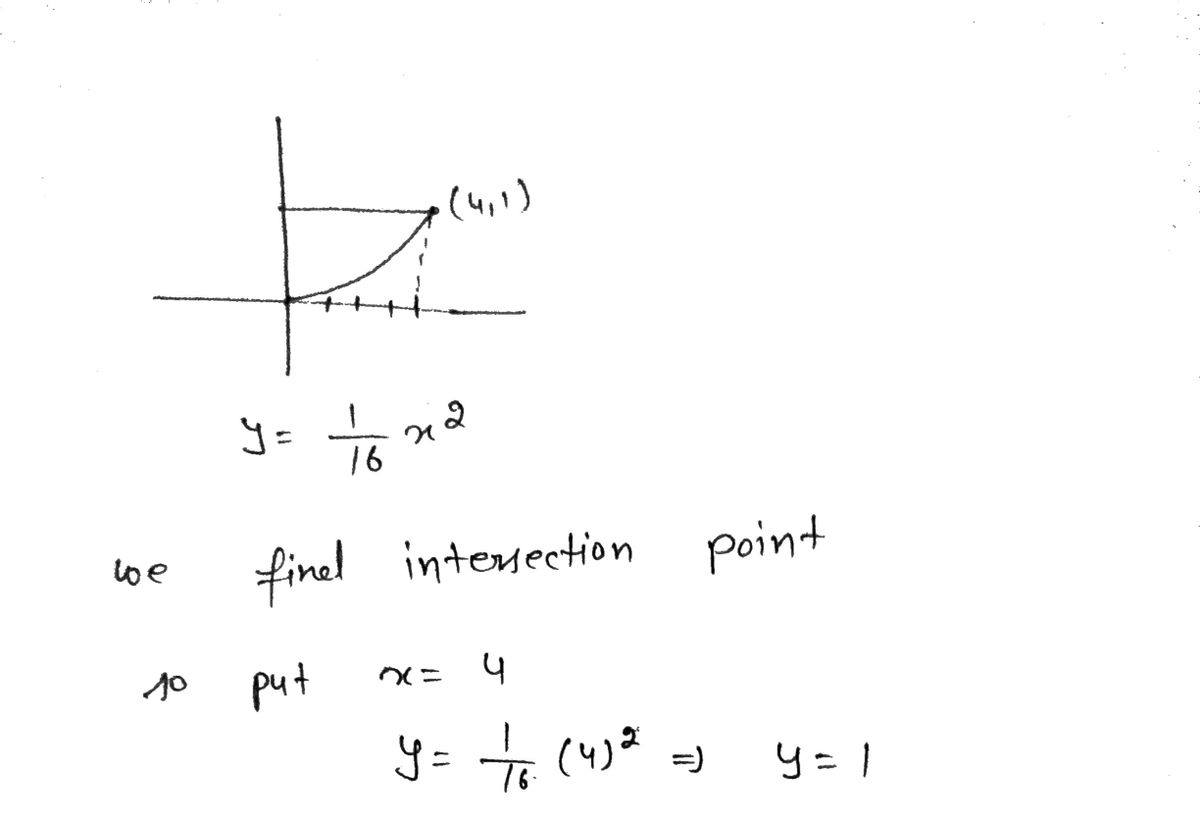D The region D above lies between the two red lines and the red parabola y 1 -2². It can be described in two ways. 1. If we visualize the region having "top" and "bottom" boundaries, express each as functions of x and provide the interval of x-values that covers the entire region. "top" boundary g2(x) = "bottom" boundary g1(x) = | interval of x values that covers the region = 2. If we visualize the region having "right" and "left" boundaries, express each as functions of y and provide the interval of y-values that covers the entire region. "right" boundary f2(y) = "left" boundary fi(y) = | interval of y values that covers the region =
D The region D above lies between the two red lines and the red parabola y 1 -2². It can be described in two ways. 1. If we visualize the region having "top" and "bottom" boundaries, express each as functions of x and provide the interval of x-values that covers the entire region. "top" boundary g2(x) = "bottom" boundary g1(x) = | interval of x values that covers the region = 2. If we visualize the region having "right" and "left" boundaries, express each as functions of y and provide the interval of y-values that covers the entire region. "right" boundary f2(y) = "left" boundary fi(y) = | interval of y values that covers the region =
Calculus: Early Transcendentals
8th Edition
ISBN:9781285741550
Author:James Stewart
Publisher:James Stewart
Chapter1: Functions And Models
Section: Chapter Questions
Problem 1RCC: (a) What is a function? What are its domain and range? (b) What is the graph of a function? (c) How...
Related questions
Question
Please double check your answer.
![The region \( D \) above lies between the two red lines and the red parabola \( y = \frac{1}{16}x^2 \). It can be described in two ways.
1. **If we visualize the region having "top" and "bottom" boundaries, express each as functions of \( x \) and provide the interval of \( x \)-values that covers the entire region.**
- "top" boundary \( g_2(x) = \) [input field]
- "bottom" boundary \( g_1(x) = \) [input field]
- interval of \( x \) values that covers the region = [input field]
2. **If we visualize the region having "right" and "left" boundaries, express each as functions of \( y \) and provide the interval of \( y \)-values that covers the entire region.**
- "right" boundary \( f_2(y) = \) [input field]
- "left" boundary \( f_1(y) = \) [input field]
- interval of \( y \) values that covers the region = [input field]
**Diagram Details:**
The diagram shows a region \( D \) enclosed by a red curve and red lines. The red curve is a portion of the parabola \( y = \frac{1}{16}x^2 \). The parabola opens upwards and intersects the horizontal axis. The red lines are vertical and horizontal, forming a boundary for the region \( D \).](/v2/_next/image?url=https%3A%2F%2Fcontent.bartleby.com%2Fqna-images%2Fquestion%2Fc8987b85-c9bd-4729-b4fc-f76ec0d3a5cb%2Fc9a95138-bf76-477f-acaa-7533a68c9224%2Fhlyx47l_processed.png&w=3840&q=75)
Transcribed Image Text:The region \( D \) above lies between the two red lines and the red parabola \( y = \frac{1}{16}x^2 \). It can be described in two ways.
1. **If we visualize the region having "top" and "bottom" boundaries, express each as functions of \( x \) and provide the interval of \( x \)-values that covers the entire region.**
- "top" boundary \( g_2(x) = \) [input field]
- "bottom" boundary \( g_1(x) = \) [input field]
- interval of \( x \) values that covers the region = [input field]
2. **If we visualize the region having "right" and "left" boundaries, express each as functions of \( y \) and provide the interval of \( y \)-values that covers the entire region.**
- "right" boundary \( f_2(y) = \) [input field]
- "left" boundary \( f_1(y) = \) [input field]
- interval of \( y \) values that covers the region = [input field]
**Diagram Details:**
The diagram shows a region \( D \) enclosed by a red curve and red lines. The red curve is a portion of the parabola \( y = \frac{1}{16}x^2 \). The parabola opens upwards and intersects the horizontal axis. The red lines are vertical and horizontal, forming a boundary for the region \( D \).
Expert Solution
Step 1

Step by step
Solved in 2 steps with 2 images

Recommended textbooks for you

Calculus: Early Transcendentals
Calculus
ISBN:
9781285741550
Author:
James Stewart
Publisher:
Cengage Learning

Thomas' Calculus (14th Edition)
Calculus
ISBN:
9780134438986
Author:
Joel R. Hass, Christopher E. Heil, Maurice D. Weir
Publisher:
PEARSON

Calculus: Early Transcendentals (3rd Edition)
Calculus
ISBN:
9780134763644
Author:
William L. Briggs, Lyle Cochran, Bernard Gillett, Eric Schulz
Publisher:
PEARSON

Calculus: Early Transcendentals
Calculus
ISBN:
9781285741550
Author:
James Stewart
Publisher:
Cengage Learning

Thomas' Calculus (14th Edition)
Calculus
ISBN:
9780134438986
Author:
Joel R. Hass, Christopher E. Heil, Maurice D. Weir
Publisher:
PEARSON

Calculus: Early Transcendentals (3rd Edition)
Calculus
ISBN:
9780134763644
Author:
William L. Briggs, Lyle Cochran, Bernard Gillett, Eric Schulz
Publisher:
PEARSON

Calculus: Early Transcendentals
Calculus
ISBN:
9781319050740
Author:
Jon Rogawski, Colin Adams, Robert Franzosa
Publisher:
W. H. Freeman


Calculus: Early Transcendental Functions
Calculus
ISBN:
9781337552516
Author:
Ron Larson, Bruce H. Edwards
Publisher:
Cengage Learning